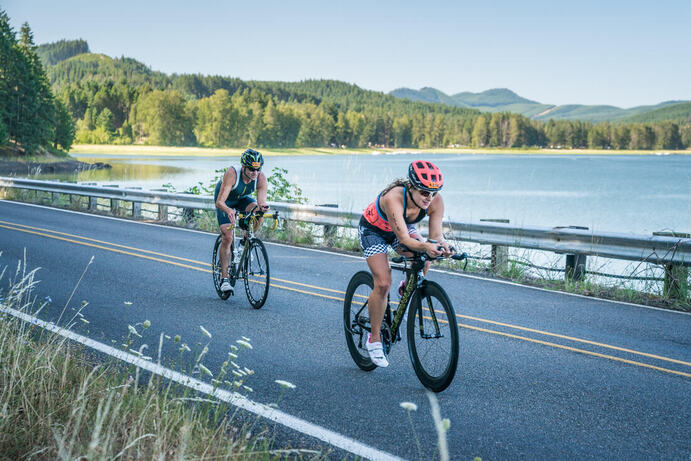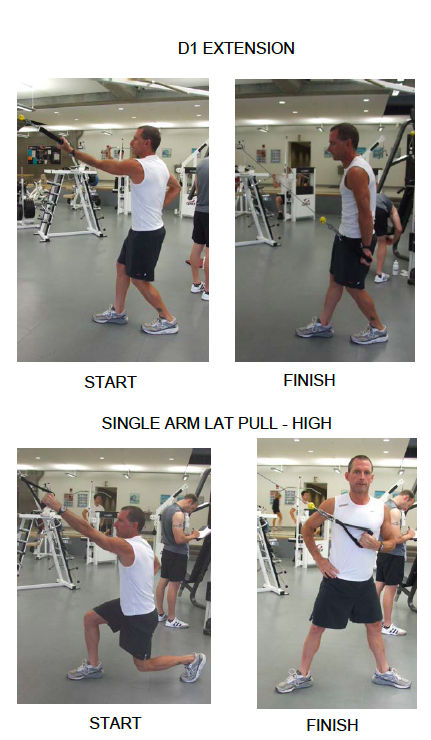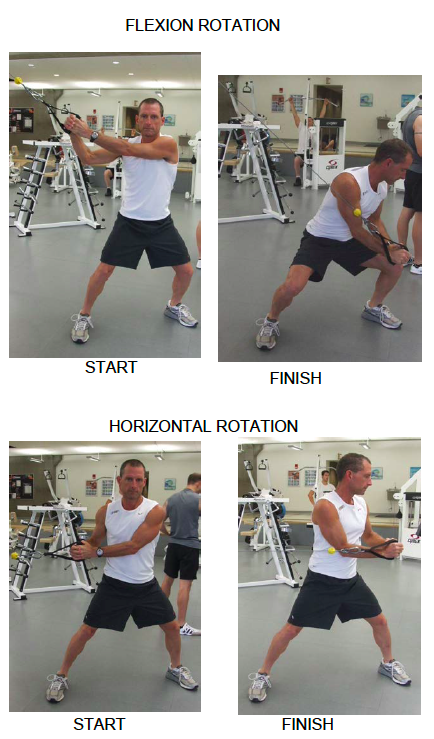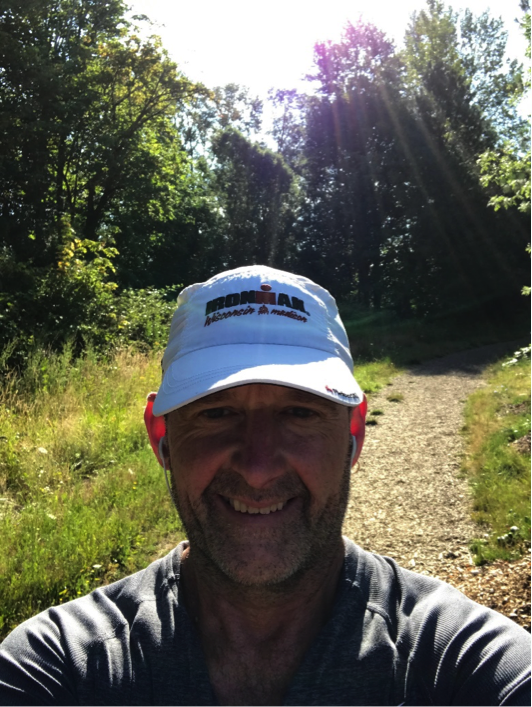|
Time for some core! Abs and glutes to be specific. Your running form will benefit from some added strength around the middle. Strength workouts don’t have to take all day, or necessary involve a gym. Take 15-20-minutes a couple of times a week and you will feel the benefits of a stronger core in your running.
Single Leg Straight Leg Dead Lift 3 sets, 10-15 reps, 2-3 times/week Stand on one leg with a slight bend in the knee. With a neutral spine, hinge forward at the hip until reaching 90 degree. Return to upright without setting your foot down. This is a slow and controlled movement. Start without weight and progress to weight as your strength and coordination improves. Notes on form
Front Plank 3 sets - starting at 30 seconds, but progressing to be able to hold perfect form for 3 whole minutes! We all know and love the plank, as we should because it is a great core strengthening exercise! This one is a plank on the forearms. Notes on form
Modification - you can start with your knees down, but be sure to get that tush in line so you have great form. Side Plank 3 sets - same as front plank. Notes on form
Progression - once you are able to hold this side plank on your knees for 3 minutes, combine this with your leg raises. Focus on getting your leg back to really target the gluteus medius while holding your plank. Eventually, you can progress to side plank on your feet, but that will come with time. Thanks for working out with me! -Staci Staci Bronson is the co-owner of Best in the West Events, a PhD candidate in Kinesiology, a coach of the Oregon State Triathlon Club, and an ultra-runner/triathlete/mountain biker/SUP lover!
Hey endurance fans!
This week's R-U-N & fun workout is brought to you by Blair Bronson, RD, Coach and worlds #1 husband... This week we look to dial in the pacing for race day, with a little thing we like to call Steady-State Race Pace Repeats: a study on form across the fatigue curve. Warm-Up: 10 min jog 5-10 min drills, dynamic stretching 4 x 30-second build w/30-second recovery Main Set: 1-mile at race pace 3-minute recovery jog Duration and number of repeats can be set depending on current fitness and training level. Recommend building up to at least 50% of your race distance. Example if training for a long course with a 13.1-mile run, do at least 6 repeats logging 6 miles at race pace. Workout Goal: Focus on maintaining form and pacing throughout the workout, dialing into what the pacing feels like with varying levels of fatigue. Bonus Strategy: Come into this workout off of a bike ride and practice your race-day nutrition throughout. For example, we'll be having Hammer Nutrition products on race course, including HEED Sports Drink and Hammer Gels; practice and find out what works best for you! Feel free to reach out with any questions: [email protected] Now, get out & get after it! ~ Coach Blair This week’s #workoutwednesday comes from Race Director and Coach, Blair Bronson.
Grab your bike and take to the hills this week with an over/under threshold workout for race simulation efforts. This workout can be done once through, multiple times through, or as a pyramid. Working the hills for race simulation efforts. Warm Up: -15 minutes easy riding -5x30 second spin-ups with 30 second recover: In an easy gear, gradually spin your legs from a normal cadence to about 120 rpm. Remain seated and focus on smooth rotations. If you feel yourself start to bounce on the seat at a higher rpm, engage your core more. -5x30 second build with 60 second recovery: Build from slightly over your warm-up pace to just shy of an all-out sprint gradually over the course of the 30 seconds. The minute recover is done very easy with a slightly high cadence. -Spend a few minutes to get to the base of your favorite (or least favorite) hill. Preferably one that takes you at least 5 minutes to climb. Main Set: Race pace climbing with over threshold efforts If you aren’t sure what your threshold is, use your race pace to guide your effort. The “overs” are harder than race pace for the distance you are doing. You should only be able to sustain the “over” pace for a couple of minutes at most. The main set of this workout can be adapted for the athlete and the race distance by adjusting the duration of the interval, the number of intervals and the intensity of the interval. For this example, we are going to assume the climb takes about 5 minutes to complete. If pacing correctly you should get faster from Climb 1-3. The focus of this workout is to be able to settle back into race pace after an extra effort is required. When settling back into your race pace see how quickly you can relax and try and bring your heart rate down. Climb 1: -2min race pace (RP), 30 seconds over threshold (Over), 2min race pace, 30 seconds over -Descend and recover for 3-5minutes Climb 2: -90sec RP, 30 seconds Over, 90sec RP, 30sec Over, ~60sec RP or until you reach the top -Descend and recover for 4-6 minutes Climb 3: -60sec RP, 30sec Over x however long until you reach the top. -Descend and recover for 5-7 minutes. Depending on fitness and training level repeat or use as a pyramid. Those training for a sprint race might do fewer repeats, but the level of race pace effort should be much higher. Cool Down: ~15 minutes easy riding with a focus on good form and smooth pedal strokes. Now saddle-up & get after it; we'll see ya out there! ~ Coach Blair This week’s S W I M workout comes from Best In The West’s very own RD, Staci Bronson.
Speed in the water doesn’t always come from yards upon yards. Technique is paramount to a smooth, effortless stroke. The less bubbles, splashing and the more you can focus your power on forward motion, the faster you’ll become - even at the same level of fitness. Today we bring you a swim workout that has a lot of drills mixed in. Doing drills throughout one of your swim workouts each week can help maintain your form, even at the end of a swim when you are starting to get tired. This workout will take you longer than the same distance on a speed work day because drills aren’t fast. Focus on excellent form and using the drill to help improve your arm/leg/head position and not on how fast you do a lap. With that, there are no sendoff times or goal times. This week, we will focus on your stroke and leave the kick out of it. If you have a pull buoy handy, this will help keep you streamline (your legs up) while allowing you to focus on your arms. Warm Up 200 yards normal swim. 100 yards fast - work out the kinks Main Set 5x 200 yards - 50 drill, 50 focus (For a longer workout, 2 x through) Each 200, choose one drill. During the drill 50, try to get the drill perfect. Don’t go for speed. On the next 50, go back to a normal swim speed but focus on the part the drill was trying to correct. Return to the drill and repeat. Then move on to the next drill. Drill 1 - Catch Up This one is for glide. Leave your arm out and gliding until your other arm comes around and enters the water. Before initiating the pull, both arms should be out in front of you. Drill 2 - Eyes up entry Look up. Look at your hand entering the water, look at where it enters and where it is going. Crossing over - Does your hand cross the center line? It shouldn’t. If you see it crossing over, try to correct and get it to make a straight line from point of entry to the wall in front of you. Crossing over slows you down. Depth - Does it stay at the top of the water? Does it go all the way down below you? The ideal depth is right around one foot to 18”. Drill 3 - Bubble Free Entry Try to get your hand and arm in the water without any bubbles. This one is for a smooth entry. Lift your head position slightly and watch your hand come in the water. If you do get bubbles, glide them away before starting your other hand. You can image there is a circle about a foot from the top of your head that you have to slide your entire hand and arm through in order to get in free of bubbles. Drill 4 - Wrist, Elbow, Pull Segmented stroke. Many people have a straight arm stroke. For this drill, we really segment the stroke to try and get you to a better arm position. Start at the pool edge. Place your hands on the gutter and push yourself up out of the pool. Notice where you put your hands for the most strength. Notice the bend in your elbows. This is a similar position to what we want underwater. You want to push the water back behind you. At the end of the glide, bend your wrist. Get it to 90°. Next, bend your elbow. Get it to 90°. Now start your pull and keep your forearm and hand parallel to the back wall until your hip. Bring it around and then start the other side. When you first try this drill, there can be some sinking. Grab a pull buoy so you can go nice and slow. Your wrist starts at 90° flexed but ends completely extended if you are keeping that hand parallel to the wall all the way through. Drill 5 - Fist Swimming Close your hand into a fist, nice and tight. Swimming without the surface area of your hand will force you to use your forearm to move forward in the water. Turns out, your forearm has a lot more surface area than your hand. Remember to get a good 90° elbow bend like you just practiced with drill 4. There are many more drills you can incorporate into your routine, have a look online for more. 100 yards fast - try to un-segment and swim with great form. Cool Down 100-200 easy with EXCELLENT form. The Core Strength Training program shown below is what I have personally been doing for my triathlon weight training for the past 10 years. The exercises shown work on developing your core muscles. The training is broken into 4 segments that are done over a 6 month training cycle. Find a gym with an adjustable cable weight machine and follow the descriptions and photos for your Core Strength Training Program. ENDURANCE PHASE 6 weeks - 2 x per week light weight 20-30 reps 1st wk - 1 set 2nd wk - 2 sets 3rd - 6th wk - 3 sets 30 sec rest betw sets STRENGTH PHASE 6 weeks - 2 x per week increase weights per set 3 sets set 1 - 15 reps set 2 - 12 reps set 3 - 8 reps (to exhaustion) 90 - 120 sec rest betw sets MUSCULAR ENDURANCE PHASE 8 weeks - 2 x per week moderate weights 3 sets 15 reps 30 - 45 sec rest betw sets MAINTENANCE PHASE 6 weeks - 1 x per week moderate to heavy weights 2 sets 15 reps 30 - 45 sec rest betw sets
This is a great early season run to develop power without going too hard for too long in the beginning stages of your training. The total distance and number of repetitions can be modified to fit your endurance level. Happy running!
40 minutes total run time Run at a steady moderately-high foundation pace (high Zone 2) for 30 minutes. After 30 minutes run a 20 second relaxed sprint at speed intensity (Zone 5 or fastest pace you can hold for 1:00 - 1:30) then slow down and run 40 seconds active recovery (Zone 1). Repeat for 6 intervals (or adjust to fit your endurance level). After you have completed your sprints, run for approximately 5 more minutes at Zone 1 recovery pace for a total running time of approximately 40 minutes. Thanks to Coach Taz of T3 Coaching for this workout! This is a great early (or mid) season ride to develop power without going too hard for too long in the beginning stages of your training. The total distance and number of repetitions can be modified to fit your endurance level.
75 minutes total ride time Ride at foundation pace (zone 2) for approximately 30 minutes to your favorite hill. The hill should have a moderate grade (4 – 6%). Perform 8 x 60 second short climbing intervals done in an efficient gear for climbing quickly. You should climb hard and fast enough to just push into Zone 5. Recover between intervals by coasting back down the hill and pedaling easily for two minutes of active recovery. Then repeat for the number of intervals indicated. After you have completed your climbs, ride home at Foundation pace for a total riding time of approximately 75 minutes. Thank you to Coach Taz of T3 Coaching for this workout! This swim workout comes from Coach Taz, who coaches the OSU Triathlon Team swim practices 3 times a week, every week, no matter what!
This type of a set helps you with your pacing and build endurance by using the 100’s as active recovery from the fast half of the longer negative splits. This workout is perfect for swimmers at any level, as there are send off times for a variety of paces. All of the times in the main set correspond to the 100 yard send off times at the top of each column. If you can swim a 100 yards at a moderate, steady pace in 1:30 then you should use the times in the 1:40 column giving you approximately 10 seconds rest per 100. Choose you send off column based on that formula. Swim the 100’s at a moderate, steady pace (en1) and really work the second half of the longer negative splits (NS). Warmup: 4 x (125 free/25 back) 4 x (100 free/25 back) 600 500 Main Set: 1:25 1:30 1:40 1:50 2:00 3 x 100 en1 1:25 1:30 1:40 1:50 2:00 - 1 x 1 x 200 NS 2:50 3:00 3:20 3:40 4:00 - 1 x 3 x 100 en1 1:25 1:30 1:40 1:50 2:00 - 1 x 1 x 300 NS 4:15 4:30 5:00 5:30 6:00 - 1 x 3 x 100 en1 1:25 1:30 1:40 1:50 2:00 - 1 x 1 x 400 NS 5:40 6:00 6:40 7:20 8:00 - 1 x 3 x 100 en1 1:25 1:30 1:40 1:50 2:00 - 1 x 1 x 500 NS 7:05 7:30 8:20 9:10 10:00 - 1 x Total : 3200 1800 Cool Down: 200 EZ 200 EZ Total: 3400 yards total 2000 yards total This is a great workout to add some discomfort into your program. It helps the body and mind get used to running at higher intensities with shorter rests.
Training at higher intensities provides the physiological stress needed for increased mitochondrial biogenesis. In short, this helps build more mitochondria (the powerhouse of the cell). More mitochondria means you can produce more energy and process the byproducts of metabolism, even at higher intensities. This allows you to race faster. Plus, these workouts are tough mentally which will help prepare you for race day. Adjust the times according to your race distance and increase the times as you progress. If you don’t already know your threshold pace, you can do this workout at an 8 out of 10 on the rating of perceived exertion (RPE) scale. Warm-up:
Main Set:
Repeat for desired miles or time Cool-down: 10min stretching/foam rolling Thank you to Rogue Tri Performance for this workout. Check out their website! This is a strength workout you can include into your training almost anytime of the year. Having a strength program integrated into your triathlon specific training plan can help keep injuries away, recovery faster, increase strength which will help you become faster. As I tell my athletes whether they are beginners or advance “in order to become faster you must first become stronger”
The warm up should be done with full range of motion and a steady pace. Do not rush through the warm up but if you are lacking time do at least 4 of the mobility drills and ease into your main sets. WU: Each movement is 10 reps each side (if pliable) and the WU should be done 2x.
MS: Power: 40sec rest between sets / 2min between rounds.
Strength:
Accessory: 30sec rest between sets / 2min between rounds
Core: 30sec rest between sets / 2min between rounds
CD: 10min light static stretching & foam rolling. Hydrate and refuel your body with nutrient dense foods. Thank you to Rogue Tri Performance for the strength workout! |



















 RSS Feed
RSS Feed